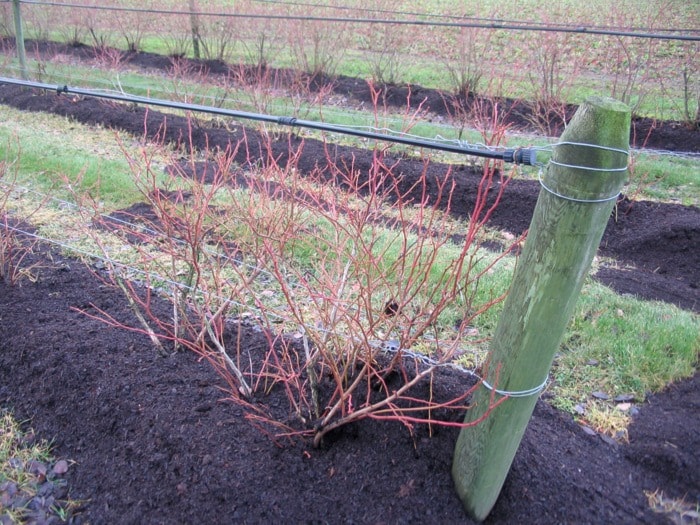Everyone enjoys eating fresh produce from the garden. For most people it’s hard to predict just how much we will get. You kind of treat it as a surprise gift: “This morning I picked two big bowls of strawberries.” In fact, if you follow a few simple pruning techniques and add a few pounds of fertilizer or compost you can dramatically increase the yield of your small fruit plants.
Lets start with strawberries. June-bearing plants produce fruit toward the end of June. After the harvest is over, trim off the old leafy growth, taking care not to damage the crown (growing point), located where the roots meet the shoot at soil level. Sprinkle two pounds of 5-10-10 or similar fertilizer per 100 square feet of row and water regularly through the rest of the growing season. The plants will grow a whole bunch of healthy new growth with lots of fruit buds for next season.
Regular raspberry varieties that fruit in July and August will respond in much the same way, with green growth the first year (these canes are called primocanes) and fruit buds developing inside these cells through late summer. The following season, these canes referred to as floricanes, which produce flowers and fruit. They then die and their remaining energy is returned to the plant for new growth. To prune raspberries, we remove any dead or diseased canes in spring so only floricanes remain. As the first flush of new growth comes up to eight inches, you can chop it off with a hoe. This will divert even more energy into fruit production. Feed the plants three pounds of 5-10-10 or similar fertilizer per 100 square feet of row. The new growth (primocanes) will quickly reappear and shouldn’t grow to more than six feet in height, which is more manageable.
Trailing blackberries are pruned in much the same fashion as raspberries. There are other kinds of blackberries that grow a little more upright and these have their primocanes pruned to 36 inches high midway through their growth season. These canes are then re-pruned early the following season to 12 or 18 inches of new growth. As blackberries produce fruit on the floricanes towards the end of summer, the fruit production doesn’t suffer any from the second pruning. This twofold pruning process helps keep these canes in an upright bushy fashion, making them a whole lot easier to pick. While raspberries might have eight or 10 new canes left per year, blackberries are usually pruned to have only four new canes each year.
Young blueberry bushes don’t usually require much pruning; however, once established they will. During the dormant season, prune out twiggy growth. Remove any dead, diseased or weak wood. Cut back any weak laterals to promote strong upright new growth. Remember that flower buds are more rounded than leaf buds. It is said that fall pruning will help delay the plants from leafing out in spring. If you were in an area prone to late frosts, this might be a good thing. Remember to top dress your blueberry plants with an acidic fertilizer (rhododendron food works well).
I separate black currants from red currants and gooseberries for pruning purposes. The European black currant produces fruit a lot better on wood that is in it’s second growing season. Red currants and gooseberries fruit better on three- and four-year-old wood. The important thing to keep in mind is that, as with fruit trees, more air and light into the centre of the plant is a good thing for less disease and better fruiting. For black currants, every year cut back two to five of the oldest shoots to the ground. For red currants and gooseberries, you can shorten the lateral branches to five leaves over summer. Make thinning cuts to create an open plant. A mature healthy bush may only contain six or eight upright branches. Don’t forget to mulch your plants well for the next season.
Evan Davies owns Beltane Nursery at 2915 Highway 3 in Erickson.
